Putting The "Show" Back In Business
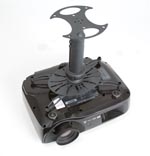
Boardroom video and audio systems. It's a serious business, right? After all, who knows what major business decisions, courtroom tactics, or educational initiatives will be based on discussions facilitated by presentation systems.
Clearly entertainment is not in order here, right? Perhaps that was the case in the past, but in the digital age those rules simply don't apply. Yes, business should be conducted seriously, but in addition being aware of the old saw of "all work and no play," it would be unwise when planning a boardroom installation to presume that the only things to be played on the audio/video system are data files from spreadsheet and presentation programs, boring training presentations, or sales pitches with lo-fi mono soundtracks or an occasional teleconference.
First, the people who make up the content just described are becoming increasingly sophisticated, and both the video and audio quality of everything displayed is improving dramatically. As important, what's to say that there won't be a time when a boardroom is used for playback of high-end content in HD, including off-air, cable, or satellite-delivered programming, or HD playback from a Blu-ray or HD-DVD disc, or an HD format camcorder?
No matter what they client says in your pre-bid needs assessment, or perhaps in even what is a firm RFQ, let's face facts, sooner or later some content with complex playback requirements is going to creep over the transom into the boardroom. It may be the request to play a DVD to babysit the CEO's children or grandchildren, it may be a celebratory party to watch the client's latest on-air spots run in a major sports event or other television broadcast, or it could be any number of other things. It doesn't matter. Despite the strongest claim that "We're all business here," sooner or later it's going to happen.
Home Sweet Office
It's up to you to try to bring HD to the boardroom while still meeting the usual criteria of budget and quality level expectations without compromising the presentation or, as needed, making the client feel that you are turning their serious place of business into a home theater. With that, particularly for those who rarely cross over into the "dark side" of residential installations, a few ideas this month about concepts, technologies and products that might normally cross your mind in the "systems" world.
First, when it comes to the display, any forward-looking view demands that it be HDMI equipped and with that will come HDMI compliance. No, this isn't needed for a "spreadsheets only" environment, but as noted above, that just won't happen. DVI is no longer enough, as it does not guarantee HDMI compliance. If there is upscaled DVD playback, playback of "pay" programming from a cable box or satellite receiver, or certainly Blu-ray or HD-DVD, the content is almost guaranteed to be protected, and you'll need the HDCP to view it. It seems simple enough, but many "industrial/installation" projectors still don't have HDMI.
It's more than just having HDMI, however. If you plan to use the HDMI connection to send 1080p content, make certain that the unit is able to accept 1080p through the HDMI. It's more than a "version" issue, as all HDMI revisions from the first 1.0 spec were capable of accepting 1080p, but that is definitely not a guarantee that any given projector actually can take a 1080p feed.
On the other hand, since this isn't a residential installation, while the latest "1.3a" version of HDMI is nice, for out of home applications you can probably make due with 1.2a or above. The benefits of 1.3, while nice, are not mission-critical for commercial use, particularly when the display device is a front projector or flat panel display with no multichannel audio capabilities.
Ah, but then we do get to audio. While on the topic of HDMI, 1.3 is, again, nice to have, but for boardrooms, not that essential. At the very least, fall back to 1.2a as a requirement, but make certain that the AV receiver or surround processor is able to accept 7.1 channel PCM feeds. This covers you for getting the latest Dolby TrueHD and DTS-HD Master Audio from a Blu-ray or HD-DVD player, as long as the player is equipped to internally convert those codecs to LPCM. Most do, but beware that some don't.
A daily selection of the top stories for AV integrators, resellers and consultants. Sign up below.
Getting Wired
When configuring the system runs, one also needs to note that at the moment there is little or nothing in the way of in-wall (CL3) HDMI cable, though that may change this month at CEDIA Expo. Even so, HDMI cables are generally not considered to be capable of in-field terminations, so you have the problem of running a cable through conduit with the connector on. Possible, as the connectors are generally able to fit through a 7/8-inch hole, but it won't be pretty the first time it hits a bend in the conduit. Even more so, longer cable runs are generally unfriendly to HDMI, or if possible, require cable not well suited to in-wall or conduit-run applications.
The alternative? There are a number of HDMI-to-Cat-5 and HDMI-to-fiber systems available, and while as with any product category everyone seems to have a brand preference, the units from the major brands do a good job of getting the HDMI to an alternative able type, then from the source or rack to the display's location, and then back to HDMI. Keep these products in mind when you plan out a boardroom's video layout.
Call To Order
In the middle of all of this is the surround processor or AV receiver that you'll likely use for source selection, surround decoding and/or processing and amplification. Here, too, a non-residential system poses some different system requirements than in their normal residential applications. For control, is there a bi-directional RS-232 port to use with any touch-screen system? Some AVRs and most processors have these, but others do not. Check into how difficult it is to integrate them. Failing that, will a standard or programmable remote be used?
Here the task is to make it easy for the most technophobic CEO to pick the remote up and quickly turn things on, whether it's watching the financial news on cable or satellite, or reviewing the past quarter's results on a spreadsheet. This type of integration may require some additional switching integration, as you may want to run the computer video directly to the computer, requiring a different remote control or source selection than when sources passing through an AV are selected.
There's more, but our space here is limited. The bottom line is, today's boardroom installations are more than simply spreadsheets and presentations. There is profit to be made in expanding their capabilities by accommodating audio/video program sources that are more than just a VCR or DVD player with mono or stereo playback. However, seamlessly weaving it all together requires some added planning on your part, a thorough understanding of who will use the system and where they will sit while doing so, and even more attention than usual to make certain everyone understands what you've installed and how to operate it. Do it right and you will definitely put the "show" in the "business" of boardrooms.
Today's boardroom installations are more than simply spreadsheets and presentations. There is profit to be made in expanding their capabilities by accommodating AV program sources that are more than just a DVD player with mono or stereo playback.
Premier Mounts Nova Series
Premier Mounts' Nova Series of universal projector mounts combines technology and full functionality with an aesthetically pleasing design. The industrial design of the mount focuses on the smooth hourglass shape. From the elliptical mounting plate, to its flowing mounting legs and hourglass shape, the Nova Series is visually pleasing. The new projector mount is suited for applications where design and aesthetics are paramount or the mount unavoidably has to be visible. Designed specifically for small-form factor projectors weighing up to 65 pounds, the Nova Series utilizes SpiroLock technology to secure the projector.
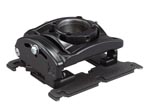
Chief RPA Elite Projector Mounts
Chief's RPA Elite Universal and Custom projector mounts feature the ability to micro-adjust roll, pitch, and yaw. RPA Elite includes features like independent roll, pitch and yaw; integrated cable management; All-Points Security; and a new slim design. In addition, the Elite offers features to make installation easier for the installer, and simplify service for the end-user. MicroZone Adjustments allow fast and precise independent micro adjustment of roll, pitch, and yaw with a #2 screwdriver.
Middle Atlantic WMRK Series
The WMRK Series accepts multiple vendor servers and extends equipment life through passive thermal management. A standard front and rear adjustable cage nut style rail with Z-rail adaptors accommodates most server-slide kits. The front door, split rear doors, and top are perforated with a 64 percent open area to provide adequate ventilation. It also ships with mounted 20 Amp vertical power strip and includes pre-installed temperature display with temperature probe and plug-in power supply. The top includes five integral 4-inch gland grommets for cable pass-through and accepts mounting of 6-, 9-, and 12-inch cable ladders.

Peerless PRG Precision Gear Projector Mount
Peerless' PRG Precision Gear projector mount allows exact tilt and roll image positioning by simply turning two adjustment knobs with a Phillips screw driver, or use the tool-less option by extending the knobs to adjust by hand. Just set the precision gear to the desired position to secure it in place, it will hold its position even during projector maintenance.
Atlas Sound Cabinets
Four new families of vertical racks from Atlas Sound The 100 Series cabinets fit applications where welded side panels and fixed rails are acceptable; they are available in five vertical panel space heights. The 200 Series, available in five vertical panel space heights and three depths (18-, 25.5-, 30-inch), is for applications with adjustable rail height requirements. For basic ganging rack requirements, Atlas offers the 22-inch wide 500 Series available in three vertical panel space heights and in 25.5- and 30-inch depths.
Winsted Pro Series II Racks
Winsted's black racks are shipped setup and ready for electronics. Pro Series II Features: fully adjustable rack rails, heavy-duty welded frames, independent lift-off side panels, black spattered finish, open top and bottom with 19-inch EIA mounting, custom vented side panels, large corner uprights for cable management,NEMA conduit knock-outs top and bottom, optional adjustable leg levelers, and tapped rack rails, front and rear This rack comes in nine sizes. Welded construction with black textured paint helps prevent marring.
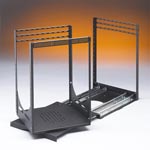
Lowell LPT Series
Lowell's LPT Series pull and turn rack is for built-in wall/millwork applications. It features heavy-duty slides for smooth pullout access to mounted equipment. Pushbutton lock and release allows for 60- and 90-degree turntable rotation. For installation convenience, the rack and turntable are separate allowing for shop mounting/wiring of equipment while the field team mounts the turntable-base into the wall or cabinetry. Docking the wired rack to the turntable base is easily accomplished using two screws on the front and rear frame.
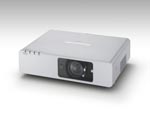
Panasonic PT-FW100NTU
Panasonic's widescreen PT-FW100NTU LCD projector is optimal for fixed-installation in conference rooms and boardrooms. The PT-FW100NTU provides 3,000 lumens with built-in wireless and wired network capability. The model's vertical and horizontal lens shift and 2x powered zoom features help reduce installation costs by allowing the projector to be placed close to an A/C power source and/or a wired network connection. This model also helps maintain maximum brightness and reduce maintenance costs with an auto rolling filter, an electrostatic filter technology that automatically detects and removes filter sections that have accumulated excessive dust.
NEC NP4001
The NP4001 with WXGA 1280 x 768 native resolution supports emerging wide screen resolutions being used in more of today's computers along with the ever increasing demands for HD signals. The NP4001 provides bright and clear images with 4500 lumens, vertical and manual lens shift and five optional bayonet style lenses allowing flexible projector placement. Dual lamp operation along with DLP technology makes it a choice for extended use installation projects. It also contains DarkChip3 DLP technology.
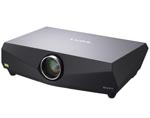
Sony VPL-FE40
Sony's VPL-FE40 has a native SXGA+ resolution of 1400 x 1050 pixels, and produces 4,000 lumens, ANSI or other. It is designed for networked fixed installations in corporate boardrooms. The projector uses a new LCD panel design called BrightEra, to produce a higher aperture ratio to deliver brighter images than previous high temperature poly-silicon LCD-based systems. It allows the projectors to achieve increased resolution and quieter fan noise. The projector can be centrally controlled and monitored via a network. Users can verify projector status and perform functions such as powering units on or off.
Mitsubishi WL639U
The high definition WL639U LCD projector is a WXGA projector for business, education, or house of worship. It's extra bright at 3500 ANSI lumens for your large multipurpose, conference, and meeting rooms. This presentation projector displays 16:9 high-definition digital video content in a widescreen 16:9 format. This LCD projector locks in details and colors with every presentation. sRGB technology ensures true color reproduction by matching hue variations in the color spectrum. With color enhancer and 3-D color uniformity this WXGA projector can give you uniform hues across your entire screen.
